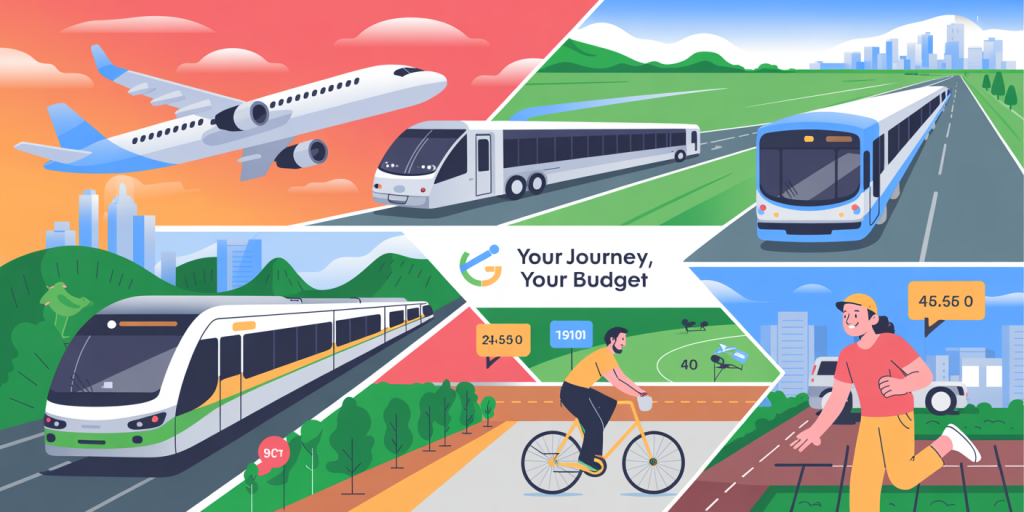Traveling offers an enriching experience that broadens perspectives, nurtures creativity, and fosters lasting memories. However, many potential adventurers shy away from exploring new places due to perceived high costs. The reality is that traveling on a budget is entirely achievable with careful planning, smart choices, and a bit of creativity. According to the United Nations World Tourism Organization, budget travel segments have seen steady growth, underscoring a global trend toward accessible travel for all income levels. This article delves into proven strategies, practical examples, and data-driven insights designed to help you maximize your travel experience without breaking the bank.
Planning Wisely: The Foundation of Budget Travel
Effective travel begins with meticulous planning. One of the crucial elements in reducing travel expenses is the selection of destination and timing. Prices for flights, accommodations, and activities vary significantly depending on the season, local events, and geopolitical factors. Utilizing flexible travel dates can result in substantial savings. For example, a Skyscanner analysis reveals that shifting travel dates by just one week can lower average airfares by up to 20%. Traveling during off-peak seasons or “shoulder seasons” offers the additional advantage of thinner crowds, better deals, and often improved availability of accommodations.
Besides timing, researching destinations that offer more affordability is essential. Countries in Southeast Asia, Eastern Europe, and parts of Central America provide rich cultural experiences at lower costs than traditional Western European or North American hotspots. For instance, a week in Vietnam can cost as little as $350 for budget travelers, including lodging and food, compared to $1,200 in Switzerland for a similar time frame. Proper budgeting at this phase involves setting realistic spending limits for transportation, accommodation, food, and entertainment, helping to prioritize essential expenses and avoid impulse purchases.

Economical Transportation Options
Transportation often comprises a sizeable part of travel costs. How you choose to traverse from one point to another has a direct impact on your budget. Air travel remains the fastest but sometimes costliest means of moving internationally. Nevertheless, savvy travelers can utilize budget airlines, error fares, and booking tools to save substantially. For example, Ryanair and EasyJet offer intra-European flights at prices often under $20 if booked early. Platforms such as Scott’s Cheap Flights highlight mistake fares and discounted tickets that can trim flight costs dramatically.
Beyond air travel, don’t underestimate the value of land or sea transportation where possible. Long-distance buses, trains, and hitchhiking are excellent alternatives, especially for domestic or regional travel. The Eurail pass, offering unlimited train travel across 33 European countries, can be a cost-effective choice compared to individual tickets if traveling extensively. Similarly, in the United States, Greyhound buses and MegaBus provide affordable intercity options with fares starting as low as $1 during sales. For urban mobility, choosing public transit over taxis or ride-shares can save hundreds annually. Many cities also support bike-share programs that double as both affordable and environmentally friendly transport modes.

| Transportation Mode | Average Cost per 100 Miles | Typical Speed | Recommended For |
|---|---|---|---|
| Budget Airlines | $20 – $50 | 500+ mph | Long-distance, international |
| Bus | $10 – $25 | 40-60 mph | Regional, domestic |
| Train | $15 – $40 | 60-90 mph | Regional, scenic routes |
| Car Rental/Driving | $30 – $60 (fuel & rental) | Variable | Flexible itinerary, remote areas |
| Bike Share/Public Transit | $1 – $5 | 10-20 mph | Urban travel |
Affordable Accommodation: Beyond Hotels
Accommodations often account for the largest share of travel expenses after transport. Luckily, modern travelers have numerous alternatives to traditional hotels that can save money while offering unique experiences. Hostels have evolved beyond simple dormitory-style rooms and now include private rooms and boutique hostels catering to diverse preferences. According to Hostelworld data, the average night in a hostel ranges from $10 to $30, significantly cheaper than hotels or resorts.
Vacation rentals on platforms such as Airbnb and Vrbo offer another versatile option, especially for groups or families. These often include kitchen facilities, enabling travelers to cook meals instead of dining out. For example, a family of four can stay in a Warsaw Airbnb apartment for less than $50 per night, compared to hotel costs exceeding $150 for a comparable setup.
Other overlooked options include house-sitting, home exchanges, and Couchsurfing, which provide free accommodations in exchange for caretaking or cultural exchange. These methods not only reduce lodging costs but also connect travelers deeply with local communities. For solo travelers or digital nomads, coworking spaces combined with affordable lodgings can optimize productivity while keeping expenses manageable.

Eating Well While Saving Money
Food expenses can quickly escalate during travel, especially when dining at tourist-heavy restaurants or international chains. However, eating affordably while appreciating local cuisine is feasible with some planning. Local markets, street food vendors, and neighborhood eateries commonly offer authentic dishes at lower prices than tourist hotspots.
For instance, in Mexico City, street tacos typically cost around $1 to $2 each, compared to sit-down restaurants where similar meals may be priced at $10 or more. This not only saves money but enhances cultural immersion. Travelers should also consider preparing their own meals when possible. Choosing accommodations with kitchen facilities enables buying fresh ingredients and cooking, which can reduce daily food costs by up to 60%, based on traveler surveys.
Grocery shopping abroad also offers an opportunity for budget savings. European supermarkets like Lidl or Aldi provide affordable ingredients ranging from fresh produce to ready-made meals. Utilizing apps like HappyCow for finding vegetarian or vegan options, or food delivery apps offering discounts and lunchtime deals, can further assist in maintaining a frugal yet satisfying diet.
Maximizing Experiences Without Overspending
One common misconception is that budget travel means sacrificing memorable experiences. On the contrary, many of the world’s most enriching activities are inexpensive or free. Museums, parks, cultural festivals, and historical monuments often have free admission days or significantly reduced rates for students and seniors.
Engaging in free walking tours is another popular way to explore cities without spending a fortune. These tours, offered in major cities like Berlin, Budapest, and New York, operate on a tips-based system, allowing travelers to pay according to their budget and satisfaction with the experience.
For adventure seekers, natural attractions such as national parks, beaches, and hiking trails provide cost-effective entertainment. Consider visiting the Grand Canyon in the US, Plitvice Lakes in Croatia, or Angkor Wat in Cambodia, where entrance fees are modest compared to guided tours or amusement parks.
Travelers can also leverage city tourism cards that bundle multiple attractions, transportation, and discounts into a single pass. For example, the Paris Pass offers access to over 60 attractions plus unlimited metro rides starting at €140 for two days, potentially saving up to 30% over individual ticket costs.
Looking Ahead: The Future of Budget Travel
The travel industry is continually evolving, influenced by technology, economic trends, and changing traveler preferences. The rise of remote work and “workcation” opportunities introduces new flexibility in travel timing and duration, which benefits budget-conscious travelers aiming to extend stays during off-peak seasons, further driving down costs.
Emerging technologies, notably artificial intelligence and machine learning, are improving personalized travel recommendations and deal-finding capabilities. Apps that aggregate real-time airfare discounts, dynamic pricing for accommodations, and even crowd-sourced local tips are becoming standard tools for budget travelers.
Sustainability and eco-tourism also hold promise for budget travel. Low-impact travel options, local community-based tourism, and environmentally friendly accommodations often provide authentic experiences without high expenditures. As travelers increasingly value meaningful connections and responsible travel, the landscape will likely emphasize affordable and ethical choices.
Government incentives and regional programs aimed at promoting domestic tourism post-pandemic also contribute to expanding budget travel options. Countries such as Japan and South Korea have introduced subsidy programs to stimulate local travel, offering reduced prices for accommodations and activities. Keeping abreast of such programs and travel trends will be crucial for future budget travelers seeking maximum value.
—
Traveling on a budget does not mean compromising on experience or quality. Instead, it emphasizes smart planning, resourcefulness, and a willingness to embrace authentic, affordable alternatives. By implementing strategies such as timing your travel, opting for cost-effective transportation, choosing alternative accommodation, and embracing local food and free experiences, you can create a fulfilling travel adventure that fits your financial constraints. The future of b